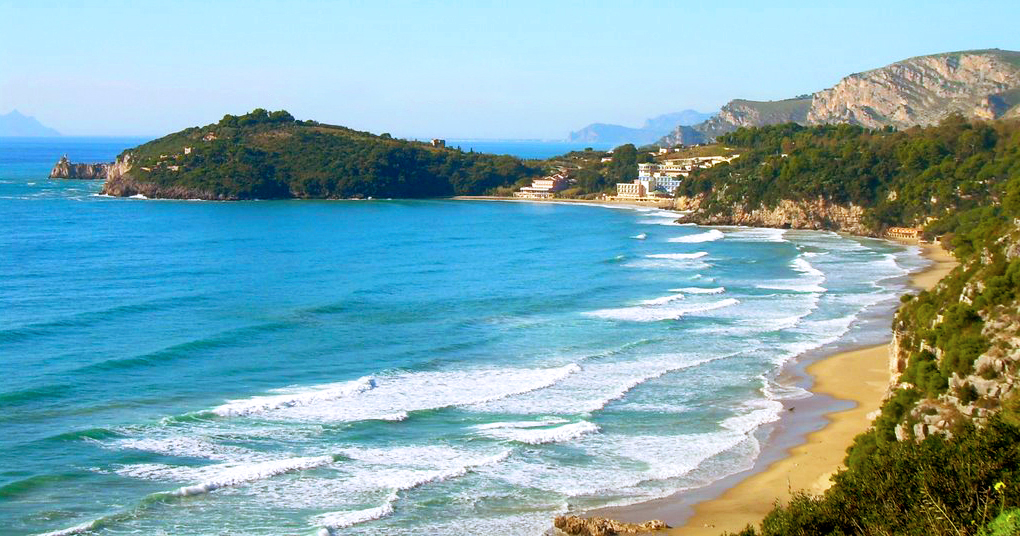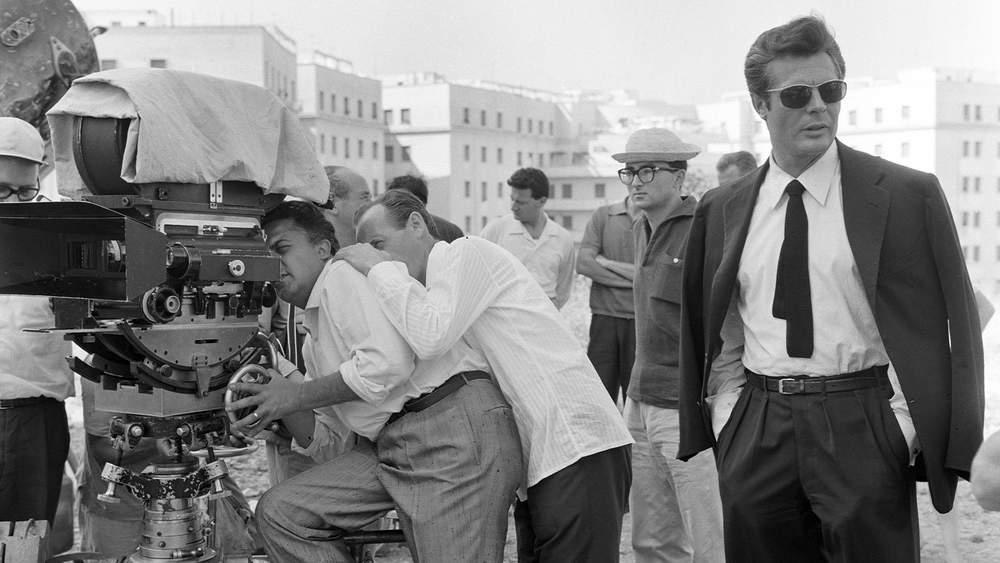Gaeta is one of the most beautiful towns in all of the southern Italian region of Lazio. But you won’t find it in many guidebooks and it is virtually unknown to tourists outside Italy. The reason is less obvious than you might think – Gaeta lacks a train station. In spite of this, it’s an extremely popular summertime destination because of its seven fabulous beaches. Residents of Italy are well aware of the charm and beauty of the town and flock from all over the country to its beaches to soak up the sun and watch surfing events. Whenever you visit, you’ll find plenty to do, from ancient ruins to wandering the old narrow streets, to shopping and dining.
Visiting Gaeta is a wonderful way to gain an appreciation for the best of that southern Italy has to offer – great food, friendly people, exceptional ambiance and a sense of history that ties everything together. It is one of the southernmost towns in the Lazio region, the region surrounding Rome. It is about 58 miles north of Naples along the Via Domitiana, which runs along the coast. Situated on a peninsula that juts into the Tyrrhenian Sea, it occupies a strategic location on Italy’s west coast. For this reason, it is the home to the U.S. Navy’s Sixth Fleet flagship.
The town has played a conspicuous part in military history, its fortifications date back to Roman times and it has several traces of the period, including the 1st century mausoleum of the Roman General Lucius Munatius Plancus at the top of the Monte Orlando. This prominent hill separates new Gaeta from the old town and has been designated an urban nature park. From the top, there are stunning views of the sea. Don’t miss Montagna Spaccata or Split Mountain, on Monte Orlando. To get there, enter the Sanctuary of the Holy Trinity, a monastery complex run by the missionary P.I.M.E. Fathers. Look for signs to the Grotta del Turco. The cliffs overlooking the sea are split from top to bottom. Locals say that the mountain was cleaved in two at the moment Christ died on Calvary. Take the path down to the Sperlonga Grotto to visit this cavern, carved out of the mountain by the sea itself. The view from inside the grotto is magical.
As beautiful as Gaeta is, its strategic location of the town made it a target for invading forces. Gaeta was sacked in 1495 by Charles VIII of France. The following year, Frederick I of Aragon regained the town with a tremendous siege that lasted for more than two months. In 1501, Gaeta was retaken by the French, who abandoned it three years later to Gonzalo Fernández de Córdoba, Ferdinand the Catholic’s general. In 1528, Andrea Doria, Admiral of Charles V, defeated a French fleet in the waters off Gaeta and gave the city to its Emperor. Gaeta was then protected with a new and more extensive wall, which also encompassed Monte Orlando.
In the War of the Spanish Succession in 1707, Gaeta was stormed and taken after a three-month siege by the Austrians under General Daun. In 1734, the town was taken by French, Spanish and Sardinian troops under the future King Charles of Naples. Less than a century later, in 1815, it capitulated to the Austrians after a three month siege. Another interesting episode occurred in 1848; after his flight from the Roman Republic, Pope Pius IX took refuge in Gaeta and remained there for a year.
Although you will be immersed in the history when you arrive, there are other things to consider. After taking in the sites of the town, you’ll no doubt be famished and if you’re looking for seafood, you have come to the right place. Most Gaeta restaurants specialize in dishes featuring local fish and shellfish. You’ll also see plenty of Gaeta olives, known worldwide; they come from the nearby town of Itri. Locals will tell you that Tiella di Gaeta is a must-try dish. It is made with two crusts and is stuffed with seafood, vegetables or a combination of the two. Pizza is popular in the evening; curiously, during the summer, most pizzerias open only at night because it’s too hot during the day to fire up the pizza oven!
The old town is packed with restaurants, but you’ll also find great food in hotels and in the newer part of town. If you’re craving lasagna, head to Atratino at Via Atratina 141, which serves excellent baked pasta. If you are in old Gaeta, try Calpurnio, a tiny restaurant at Vico Caetani 4, who set up outdoor tables during the summer and fall. The simple menu features seafood dishes and pizza. The food and atmosphere provide a perfect combination for living the beautiful life. If you’re looking for an elegant beachfront restaurant, head to Cycas at Via Marina di Serapo 17.
Festival season in Gaeta begins with Pasquetta, Easter Monday, which is more of a pilgrimage day than the picnic day. Pilgrims flock to the Holy Trinity Sanctuary on Monte Orlando. Gaeta’s patron saint, Sant’Erasmo, is the protector of sailors and fishermen. You will find that the weekend closest to June 2 will have celebrations and fireworks that also extend to the nearby town of Formia. During the summer, the town has a bit of California flair when Sant’Agostino Beach hosts surfing contests. New Year’s Eve is celebrated with local musicians and fireworks that sparkle up and down the coast. If you’re in town for New Year’s Eve, book a room with a view; you’ll see fireworks south all along the beaches.
Gaeta’s hotels and beaches are jammed during August, Italy’s vacation month, but there’s a lot going on in the town at any time of year. Its seven beaches are deservedly popular, with sparkling water, white sand and well-run lidos (pay-to-use beaches). Most visitors head to Serapo Beach, the closest to downtown. Surfers know that the best waves (and sunsets) are found at Sant’Agostino Beach, north of town.
Gaeta’s tiny old town offers something for everyone. Stroll along the Lungomare (sea road) and watch fishermen ply their trade. Look up and see the walls of the Angevin-Aragonese castle, high above the town. Unfortunately, you can’t visit the castle because it is still in use by the Italian military. As you walk through the town, you will notice a Romanesque bell tower tucked away between buildings. The Cathedral’s tower is considered the city’s finest piece of art. The base has two marble lions, while the upper octagonal plan contains small Romanesque arches with majolica decoration. The tower dates to 915 AD. Walk up to it and look closely at the building materials. You’ll see blocks with carvings on them. The builders of this 10th century tower re-used items from even more ancient structures during construction! Further up the hill you will come to the beautiful Cathedral of Assunta e Sant’Erasmo, dedicated to the Patron Saint of the town. Completed in 1279 and renovated many times, the devotion of the artisans is evident with every detail of this Duomo.
Gaeta is well worth the effort to get there. Between the history, food and people, you will be the envy of travelers who have overlooked this sparkling town.





